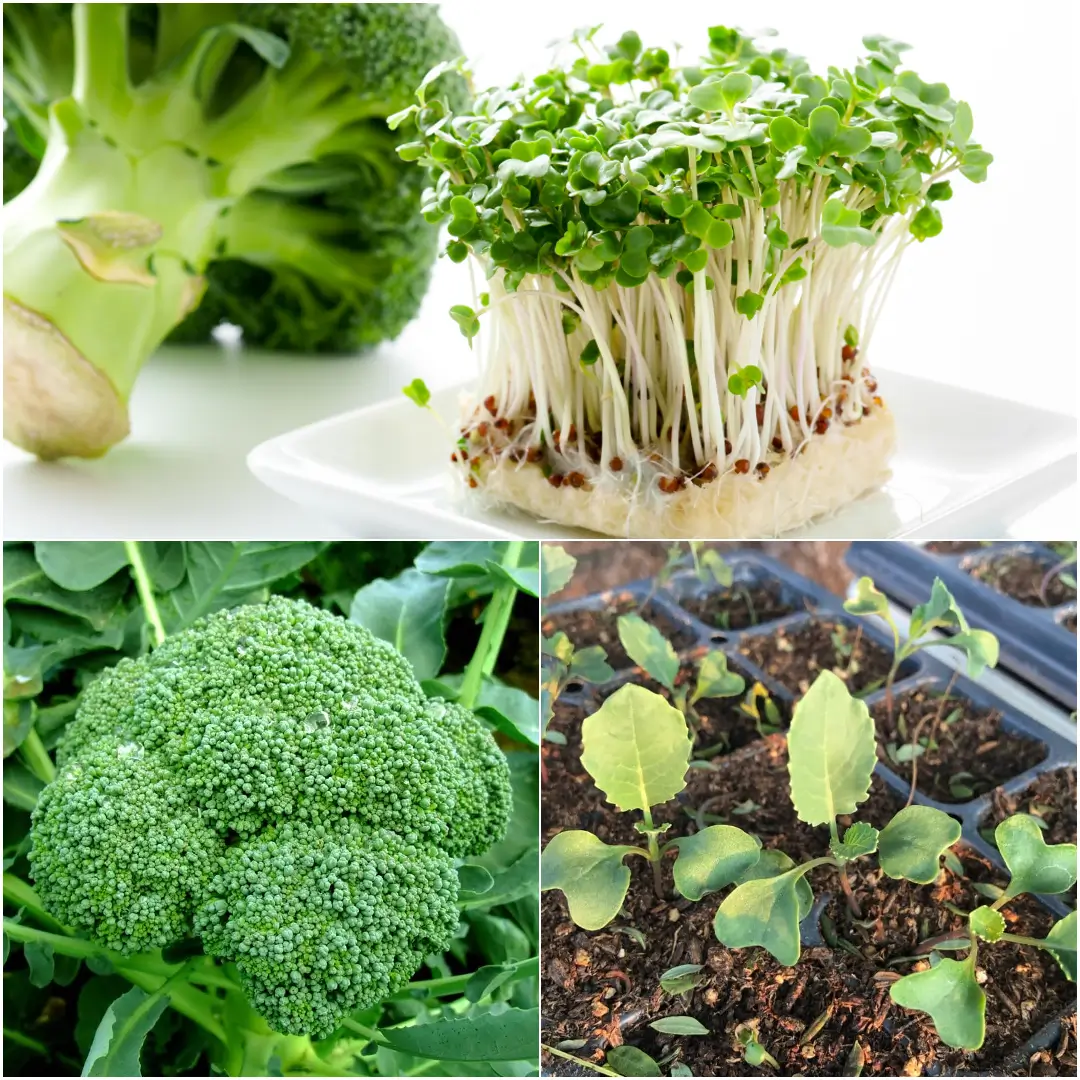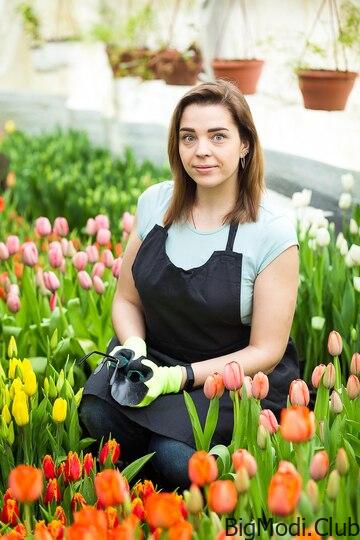Growing broccoli is like embarking on a flavorful journey in your garden. With its vibrant green spears and nutritional punch, broccoli is not just a vegetable but a crown jewel of your culinary arsenal. Whether you’re a seasoned gardener or just starting, I’m here to share everything you need to know about how to grow broccoli successfully. So, grab your gardening gloves, and let’s dive into this rewarding adventure!
Planting Broccoli
When to Plant Broccoli
Timing is everything in gardening, and broccoli is no exception! This cool-season crop thrives in mild temperatures, making it perfect for both spring and fall planting. Here’s a quick guide on when to plant:
- Early to Mid-Spring: Start your seeds indoors about 6 to 8 weeks before your last frost date. This is your opportunity to get a head start!
- Outdoor Sowing: If you prefer direct sowing, aim to plant 2 to 3 weeks before the last frost.
- Mid to Late Summer: For a fall crop, sow seeds 85 to 100 days before the first expected fall frost.
Keep in mind that while broccoli seeds can germinate in cooler soil (as low as 40°F or 4°C), they flourish best in warmer conditions. So, don’t be shy about waiting for the right soil temperature!
Spacing Your Broccoli Plants
Once you’ve chosen your planting time, it’s time to think about spacing. Proper spacing ensures each plant gets enough sunlight, nutrients, and air circulation. Here’s how to do it:
- Sowing Seeds Outdoors: Plant seeds about ½ inch deep and 3 inches apart.
- Thinning Seedlings: Once your seedlings reach 2 to 3 inches tall, thin them out so they’re spaced 12 to 20 inches apart. This helps prevent overcrowding and promotes healthier growth.
- Row Spacing: Make sure to space your rows of broccoli 3 feet apart. This will give you room to maneuver while maintaining air flow between the plants.
Soil Requirements for Broccoli
Broccoli loves a rich, well-draining soil that is full of nutrients. Here are the specifics to set your plants up for success:
- Sunlight: Aim for a location that gets full sun—about 6 to 8 hours of sunlight per day. A sunny spot will keep your broccoli robust and thriving.
- Soil Preparation: Before planting, work in 2 to 4 inches of rich compost or a thin layer of well-rotted manure. This enriches the soil and provides essential nutrients.
- Soil pH: Broccoli prefers a slightly acidic soil pH between 6.0 and 7.0. A quick soil test can help you determine if you need to adjust your soil’s acidity.
Growing Broccoli
Once your broccoli is planted, it’s time to nurture those little seedlings into flourishing plants. Here’s how to keep your broccoli happy and healthy:
Ideal Growing Temperature
Broccoli thrives in cooler temperatures, ideally between 65°F and 70°F (18°C and 21°C). If temperatures soar too high, it can lead to bolting (when the plant goes to seed) and tough heads. Keeping an eye on the forecast will help you anticipate any heat waves.
Fertilization
After you’ve transplanted your seedlings into the garden, it’s time to feed them! About three weeks after planting, apply a low-nitrogen fertilizer, such as a 5-10-10 formula. This balanced approach encourages healthy growth without overwhelming the plants.
Watering Wisely
Consistency is key when it comes to watering broccoli. Here’s how to do it right:
- Regular Moisture: Aim to provide about 1 to 1½ inches of water each week, especially during dry spells. This keeps the soil consistently moist but not soggy.
- Avoid Wetting the Heads: Be careful not to get water on the developing heads, as this can lead to rot. Instead, water at the base of the plant to keep the heads dry.
Weeding and Mulching
Weeds are the nemesis of any gardener, but fear not! Here’s how to manage them effectively:
- Mulching: Use organic mulch around your broccoli plants to suppress weeds and maintain soil temperature. Plus, it adds nutrients back into the soil as it breaks down!
- Hand Weeding: If you do need to weed, be gentle. Broccoli has shallow roots, and disturbing them can cause stress to the plants.
Pest Management
Pests can be a real headache, but a little prevention goes a long way. Here are some tips to keep your broccoli safe:
- Row Covers: Using lightweight row covers can deter pests like aphids and cabbage worms while allowing sunlight and moisture to reach your plants.
- Encourage Beneficial Insects: Planting flowers nearby can attract ladybugs and other beneficial insects that help keep pests in check.
Promoting Side Shoot Growth
After you harvest the main head of your broccoli, you can encourage your plant to produce smaller side shoots. To do this, maintain an active feeding and watering schedule. This way, you can enjoy fresh broccoli for weeks to come!
Harvesting Broccoli
When to Harvest
Timing your harvest is crucial to getting the best flavor and texture from your broccoli. Here’s when and how to do it:
- Morning Harvest: Harvest your broccoli in the morning when the buds are firm and tight. This is when they’re at their peak!
- Cutting Technique: Use a sharp knife to cut the heads from the plant, leaving at least 6 inches of stem. Make a slanted cut to prevent water pooling, which can cause rot.
Post-Harvest Care
After you’ve enjoyed the main head, don’t forget that your broccoli can keep on giving! The plant will often produce side shoots that can be harvested for several weeks. Keep an eye out for new growth!
Storing Broccoli
Once you’ve harvested your delicious broccoli, it’s time to think about storage:
- Refrigeration: Store your fresh broccoli in the refrigerator for up to 5 days. If you wash it, be sure to dry it thoroughly to prevent moisture buildup.
- Freezing: If you want to keep it for longer, blanch the broccoli before freezing. Properly blanched broccoli can be stored for up to one year—perfect for enjoying that homegrown taste throughout the winter!
Types of Broccoli
While the common variety you find at the store is Calabrese, there are several other types of broccoli worth considering for your garden:
- Calabrese: Known for its large heads and prolific side shoots, this heirloom variety is a garden favorite.
- Flash: A fast-growing, heat-resistant hybrid that’s perfect for those warmer climates.
- Green Goliath: Heat-tolerant and known for its giant heads—what’s not to love?
- Green Duke: This early variety is especially good for Southern gardeners looking to get a head start.
- Green Magic: A reliable variety that freezes well, perfect for meal prep.
- Paragon: Known for its extra-long spears, excellent for freezing and enjoying later.
Pests and Diseases
Like all crops, broccoli can be susceptible to various pests and diseases. Here are some common offenders to watch out for:
Common Pests
- Aphids: These tiny bugs can cause curled leaves and sticky residue. Control them with water sprays or insecticidal soap.
- Cabbage Loopers: These caterpillars create large holes in leaves. Handpick them or spray with a natural pesticide.
- Cabbageworms: Another caterpillar culprit; you can use row covers or Bt (Bacillus thuringiensis) to deter them.
Common Diseases
- Clubroot: This fungal disease causes distorted roots and yellowing leaves. Rotate your crops and maintain a proper soil pH to combat this.
- Downy Mildew: Look for yellow spots on leaves. Good air circulation and resistant varieties can help prevent this issue.
- White Rust: White blisters on leaves indicate this disease. Remove infected plants and keep your garden clean to reduce the risk.
Growing broccoli is not only rewarding but also an excellent way to contribute to your diet with fresh, nutritious veggies. By following these detailed steps— from planting and caring for your plants to harvesting and storing your crop—you’ll be well on your way to enjoying a bountiful harvest. So, don’t wait any longer! Get your hands dirty and start your broccoli-growing adventure today. Who knows, you might just discover your new favorite vegetable along the way!
FAQs
How do you grow broccoli for beginners?
Growing broccoli for beginners is simpler than you might think. Start by choosing a cool-season to plant your seeds—either early spring or late summer. You can begin by either sowing seeds indoors 6 to 8 weeks before the last frost or directly sowing them outdoors. Use rich, well-draining soil and ensure the plants get full sun (about 6-8 hours a day). Keep the soil consistently moist and use mulch to control weeds. As long as you follow these steps, you’ll have a successful broccoli garden!
Pros: Easy to follow for new gardeners, yields a rewarding harvest.
Cons: Requires monitoring soil moisture and protecting plants from pests.
How long does it take to grow broccoli?
Broccoli typically takes anywhere between 85 to 100 days to grow from seed to harvest. After transplanting, it can take around 55 to 80 days before you start seeing those heads forming, depending on the variety and growing conditions. Fall crops might take slightly longer due to cooler temperatures.
Pros: Knowing the time frame helps you plan your garden efficiently.
Cons: If conditions aren’t optimal, it may take longer or result in smaller heads.
Does broccoli need sunlight to grow?
Yes, broccoli needs plenty of sunlight—ideally about 6 to 8 hours per day. Sunlight plays a critical role in photosynthesis, which helps the plant grow healthy leaves and heads. Without enough light, broccoli may grow weak and produce small heads.
Pros: Adequate sunlight ensures robust growth and larger heads.
Cons: In areas with limited sunlight, finding the right location can be a challenge.
Will broccoli grow back after cutting?
Yes, after cutting the main head, broccoli plants often produce smaller side shoots. With proper care—continued watering, fertilizing, and pest management—you can enjoy these side shoots for several weeks.
Pros: Extends your harvest beyond the main head, giving you more broccoli for your effort.
Cons: Side shoots are typically smaller, so they won’t be as large as the initial head.


